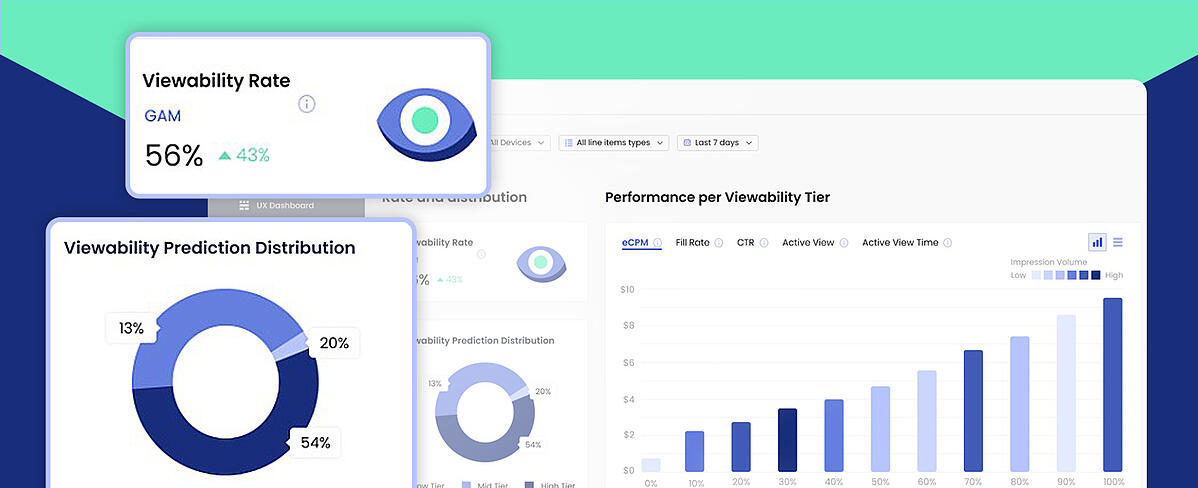Resolving the conflict between the ad inventory and the UX
By Asaf Shamly | April 9, 2021

Here’s the scenario:
Jill wants to optimize her company’s ad inventory by moving placements around and using tools such as lazy loading & ad refresh.
Jack, responsible for UX, has limited what Jill can do because harming the UX is an absolute no no. What if the page shifts or breaks? What if the users don’t like the layout?
As the infomercials say, has this ever happened to you?
On everyone’s agenda is to ultimately increase page revenue. The problem tends to start when the different ways of doing this conflict with one another.
The ad inventory determines how efficiently a company is profiting from ad revenue and the UX determines how many people stay on the site once they arrive, delivering positive metrics that increase that ad revenue..
Can’t we all just be friends? Absolutely! But not by using the status quo.
Publishers require a more intelligent method to perfectly balance each end of the scale.
Let’s delve into some of the main points of conflict and how Browsi has become the peace negotiator for harmonious synergy between the two sides.
Latency
The conflict: Here’s a simple one. Ever get to a page that takes too long to load and give up?
Adding tools for the ad inventory can add up and slow down the page, making it counterproductive. This has been THE number one concern our publishers have, and rightfully so.
The Solution: Browsi’s tech can determine when and how to load ads in real time without holding the page hostage. When ads are being efficiently managed and loaded, you can actually decrease latency!
Page Shift
The Conflict: Page shifting occurs when tools like ad refresh may end up changing the layout of the page after refreshing to a new ad. This is also a concern with using tools that change the page layout.
Not only can this make the page seem broken, it can also cause the user to click on something they had no intention of clicking. A disaster in the UX world.
The Solution: Browsi’s AI takes the entire page layout into account while managing how and when the ads load to make sure this is never an issue that occurs. Additionally, Browsi’s console allows the publisher to determine within what parameters our AI works on the page so you always have full control.
Number of Placements
The Conflict: Ad ops may add placements to bring in additional revenue and editorial teams may want to limit placements as they’re worried too many ads would harm the UX. Both are very legitimate concerns, which brings us back to how we balance the best of both worlds.
The Solution: Firstly, no two users are alike. That’s a rule of thumb that’s integral to understanding how significant a more versatile solution is to any publisher.
Secondly, let’s stop deciding on one layout for all users or even a few templates for different sections. Manually tackling this conflict is impossible and publishers end up losing a significant amount of revenue by not accounting for EACH user’s behavior.
Browsi analyzes over 100 data points in real time to predict exactly how an individual user will behave and how your page should react. At times, this means more placements and at times it means less. More importantly, this means the ads are loaded where and when it’s most optimal for that user. The best solution is to balance the highest potential revenue while keeping a great UX intact.
Lazy Loading
The Conflict: Here’s one almost as popular of an issue as latency. The idea is to create a logic that helps load ads more efficiently without wasting them should the user not scroll to a certain point of the page.
Theoretically, lazy loading is a fantastic solution. However, in practice, most publishers end up loading a LOT of impressions per page and overall they actually see a dip in the revenue even if they see an increase in viewability and CPM’s.
The Solution: In order for lazy loading to truly be profitable, it needs to be backed by real-time intelligence. Browsi decides if, where & when to use lazy loading in real time by understanding exactly how each user will interact with the page.
For lazy loading to be effective, it must be dynamically per user.
The Conclusion:
Balancing the scale between UX and the Ad inventory is the best way to ultimately maximize page revenue. By reacting in real time on a granular level, Publishers can make sure ads are right where they should be and when they should be there.
Browsi acts as the guardian angel of ad inventory; defending users against a negative experience while providing the publisher max revenue.
Without Browsi, publishers are forced to take on many vendors and still end up attempting to manually keep up with a real-time need.
When it comes to UX, our philosophy is to treat each user as they are; individuals with different behaviors and seeking different experiences.
And we’re here to make sure your page makes the most out of each and every one of them without altering that experience.
Latest Articles
-

Do NOT make me choose between a great UX and boosting my revenue!!
The ongoing clashes between revenue, product, and editorial teams are painful to say the least. It doesn’t have to be this way.
View Now -

Your Brand New Viewability Dashboard!
Understand your inventory breakdown with the new Viewability Dashboard.
View Now -

Maximize Your UX & Revenue Data With Personalized Reports
Ready to uncover insights and step up your ad layout strategy?
View Now
